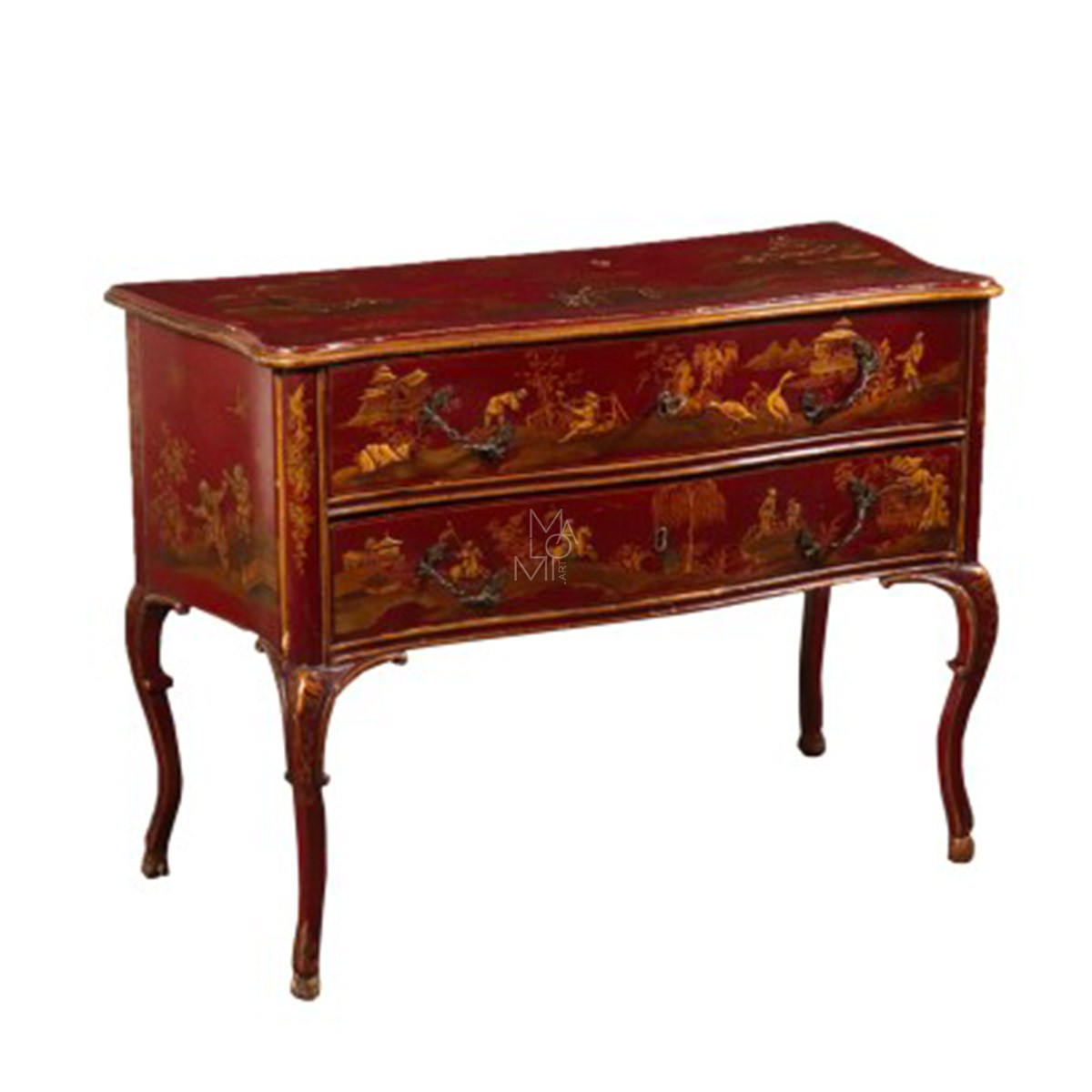17th century tortoiseshell, rosewood and bronze coin cabinet
Coincabin or travelling desk, of Italian origin, Neapolitan area, dating from the 17th century.
Its origin dates back to the 16th century. Furniture was widely used, as royal courts were nomadic and the desk solved many problems. The first influence came from Italy. From the 16th century onwards, Spanish desks abandoned Renaissance figurative carving and inlay decoration. They tend towards a transformation influenced by Escuriale architecture. The demand for this type of part increases, to contain documents, and simpler types are implemented. An example of this is the one Juan Hernández made in 1609 for Alonso Sánchez, usher of Philip II. This admirable Salamanca 'bargueño' made of marine tortoiseshell, rosewood, fruit wood and gilded metal plating has a central door concealing several drawers.
The name derives from the first reference in Francisco Herrero Campuzano's inventory as 'of Salamanca'.
Restorations
Dimensions in centimetres
Length 46
Depth
Height 83
